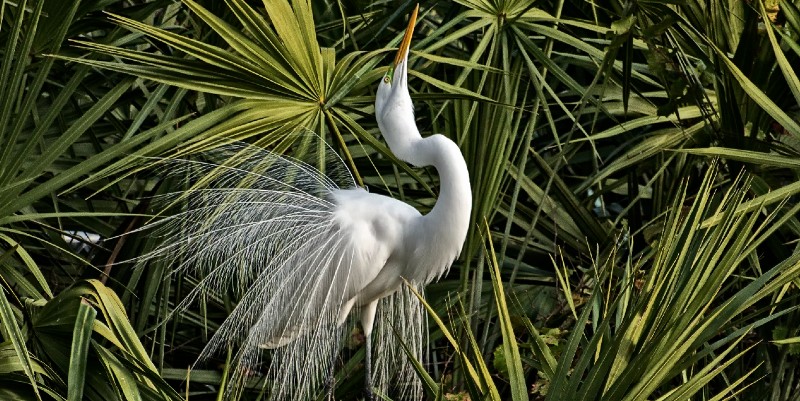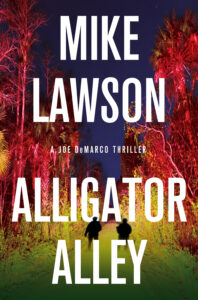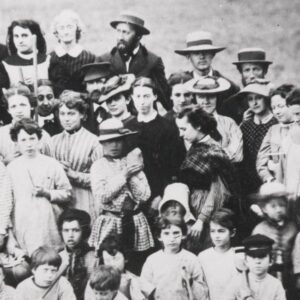Highway 75 cuts across southern Florida, through the Everglades, going from the beaches of Fort Lauderdale to the beaches of Naples. Highway 75 has another name. It’s called “Alligator Alley” for the obvious reason that the knobby-headed reptiles thrive in the swamp on both sides of the eighty-mile roadway. And traveling down this highway, as I have done, it’s not hard to imagine two killers on a dark night dragging a body into the swamp knowing the gators will dispose of the corpse—which is pretty much how my new Joe DeMarco thriller, Alligator Alley, begins.
I set other parts of Alligator Alley in Key West and Naples and Miami, places we passed through as my wife and I drove from Key West to the panhandle when my son was graduating from the Navy’s diver training school in Panama City. On this road trip, we saw Hemingway’s house in Key West and the feral six-toed cats that roam the place. We saw swordfish and mahi-mahi hanging on the piers where the charter fishing boats docked. We drove the hundred-mile highway that crosses the Florida Keys archipelago from Key West to Key Largo, where you ride just above the waves with the Atlantic Ocean on one side and the Gulf of Mexico on the other—the whole time imagining what it must be like during a hurricane. We took a tour through the Everglades on one of those boats with a big fan on the back and saw the gators slithering into the water and cypress trees dripping with blue Spanish moss. We saw Miami’s skyscrapers perched on Biscayne Bay and the pastel-colored art deco buildings on Ocean Drive and giant billboards advertising jai alai games. On the waterfront in Fort Lauderdale, we walked by gleaming two-hundred-foot yachts owned by billionaires. In Tampa, we watched brown-skinned women sitting in storefront windows rolling cigars with their quick, hard hands and on the Florida panhandle, we saw the casinos of the Redneck Riviera.
Yes, I saw all these places and when I wrote Alligator Alley, I felt comfortable using some of them as settings in my book, but I also knew that I saw Florida as a tourist and not as someone who’d lived there for many years and knew the state and its people intimately. Fortunately, I was able to compensate for my lack of time on the ground in Florida because so many other books have been set there, books written by truly talented authors, and I’d read many of those authors’ books.
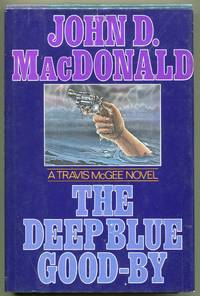
The Deep Blue Good-by by John D. MacDonald
The first author that comes to mind when I think of books set in Florida is John D. MacDonald. I’ve read every one of his Travis McGee novels—The Deep Blue Good-by, Nightmare in Pink, A Purple Place for Dying and 18 More—and I imagine there are a lot of authors writing crime fiction today that were inspired by John D. MacDonald as I was. Travis McGee is without a doubt the prototype for many of today’s lesser-known crime novel protagonists. He isn’t a cop or a licensed investigator but the guy you go to when the law won’t or can’t help. He’s a flawed knight-errant. There are moral lines he won’t cross—but the lines tend to move. He lives on a houseboat in Fort Lauderdale that he won in a poker game called the Busted Flush. His partner, known only as Meyer, is a wealthy, connected economist, but I imagine that if MacDonald was writing today, his sidekick would be a hacker because one thing about MacDonald’s novels is that they reflected changing times. His first Travis McGee novel was published in 1964, the last one in 1985, and as culture and attitudes and politics changed over those two decades, MacDonald’s books reflected this. Reading the Travis McGee novels not only gives you a better sense of Florida as a setting, but they also show how an author and his characters change with changing times.
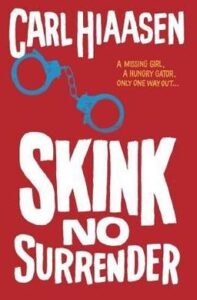
Skink No Surrender by Carl Hiaasen
I love the titles and covers of Carl Hiaasen’s crime novels: Sick Puppy, Bad Monkey, Paradise Screwed, Razor Girl, Skink No Surrender, and so on. He’s famous for the humor and satire in his books, almost all of which are set in Florida, and the seemingly over-the-top yet true-to-life characters, like the corrupt politician played by Burt Reynolds in the movie Strip Tease. And then there’s Skink, the protagonist in eight of his books. Skink is a one-eyed former governor who romps through the Everglades fighting criminals and commercial development and dines on roadkill.
But what I find fascinating about Hiaasen is that he’s a former journalist nominated for the Pulitzer Prize. He did serious investigative reporting for the Miami Herald about the issues plaguing the Sunshine State—yet he chooses to write about these issues in his novels in a humorous way. I watched an interview he gave, and he was asked: “Why do you set your books in Florida?” His answer was: “[Because] there’s so much crime and corruption … and after every disaster, the scammers come in. One of the first people who got arrested for stealing COVID relief money bought a blue Lamborghini and posted a photo of it online.” Can’t you just see the blue Lamborghini on the cover of one of his books?
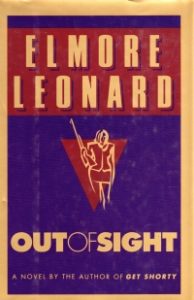
Out of Sight by Elmore Leonard
I don’t know how many Elmore Leonard novels have been set in or started off in Florida but just the ones that have been adapted for movies makes an impressive list: Rum Punch (Jackie Brown), Out of Sight, Get Shorty, Stick, The Big Bounce, Cat Chaser. What you won’t find in Leonard’s books are poetic descriptions of the Florida landscape. One of Leonard’s Ten Rules for Good Writing—and if you’re a writer and you haven’t his rules, you should—is: “Don’t go into great detail describing places and things.”
Leonard, like Hiaasen, is fascinated by Florida’s grifters and conmen and petty criminals. In his own words: “The bad guys are the fun guys. The only people I have trouble [writing] are the so-called normal types.” And it’s through the words of his characters that Florida comes alive in Leonard’s novels:
“It doesn’t bother you,” Nolen Tyler said, “you call this place the Coconut Palms, there isn’t a single palm tree out there?”
“The high rise on the south side of us, nine stories, is called the Nautilus,” Moran said, “but I don’t think it’s a submarine. The one on the other side, it’s ten stories, is the Aurora. Tell me if you think it looks like a radiant glow in the upper atmosphere.”
I would give anything to be able to write like Elmore Leonard.
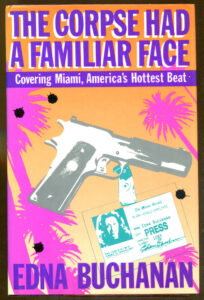
The Corpse Had a Familiar Face by Edna Buchanan
In the interest of full disclosure—and knowing in advance that I’ll embarrass myself by displaying my ignorance—I’d not read an Edna Buchanan book until I began doing research for this article. But if you Google “Famous Florida Writers” in addition to the three mentioned above, you’ll almost always see the name Edna Buchanan. I came across her name when I read Naked Came the Manatee. Naked Came the Manatee is a thriller parody written by thirteen Florida writers, each writer contributing a chapter, and the idea for the book, according to one source, came about at a boat party attended by Carl Hiaasen, Elmore Leonard and, drumroll, Edna Buchanan.
Edna Buchanan won the Pulitzer Prize while working for the Miami Herald. Her beat was crime and politics, and from her experience came her non-fiction book The Corpse Had a Familiar Face, a book which spawned two movies and is comparable in some ways to Homicide: A Year on the Killing Street by The Wire’s David Simon. To date, Edna Buchanan has written sixteen novels, mostly set in Florida, and three other non-fiction books.
I’ve never met Ms. Buchanan but would love to, especially after I read one line from The Corpse Had a Familiar Face: “To entrust to an editor a story over which you have labored and to which your name and reputation are attached can be like sending your daughter off for an evening with Ted Bundy.”

Florida by Lauren Groff
There are many talented, well-known crime fiction authors who have used Florida for a setting: Randy Wayne White, Lawrence Sanders, John Lutz, James Swain, Lucy Burdette, Stuart Woods, and John Grisham to name a few. But the last author I wanted to include in this article is not a crime novelist. It’s Lauren Groff. Her book Florida was a finalist for the National Book Award and in the words of one reviewer: “The stories … span characters, towns, decades, even centuries, but Florida—its landscape, climate, history, and state of mind—becomes its gravitational center: an energy, a mood, as much as a place of residence.” Another reviewer said: “Groff has grasped the true grotesqueness of Florida, an ‘Eden of dangerous things’ spliced with stinking bodies, living and dead.” I’d suggest you put this book on your reading list if you want to get a phenomenal sense of Florida as a setting.
***

